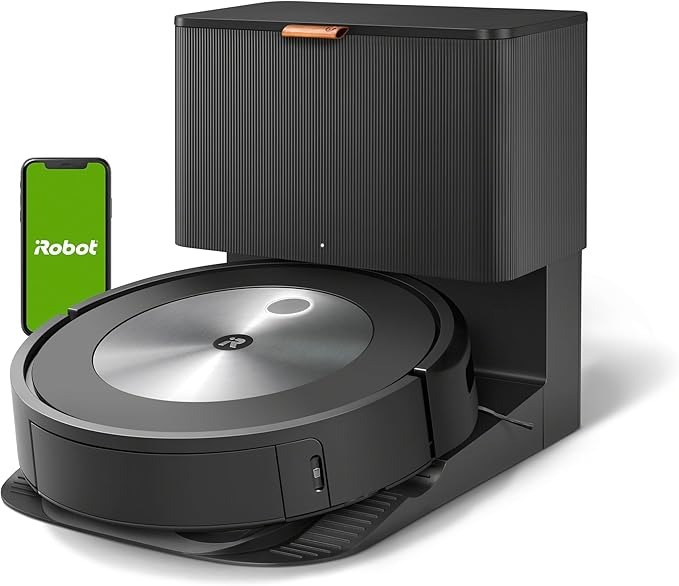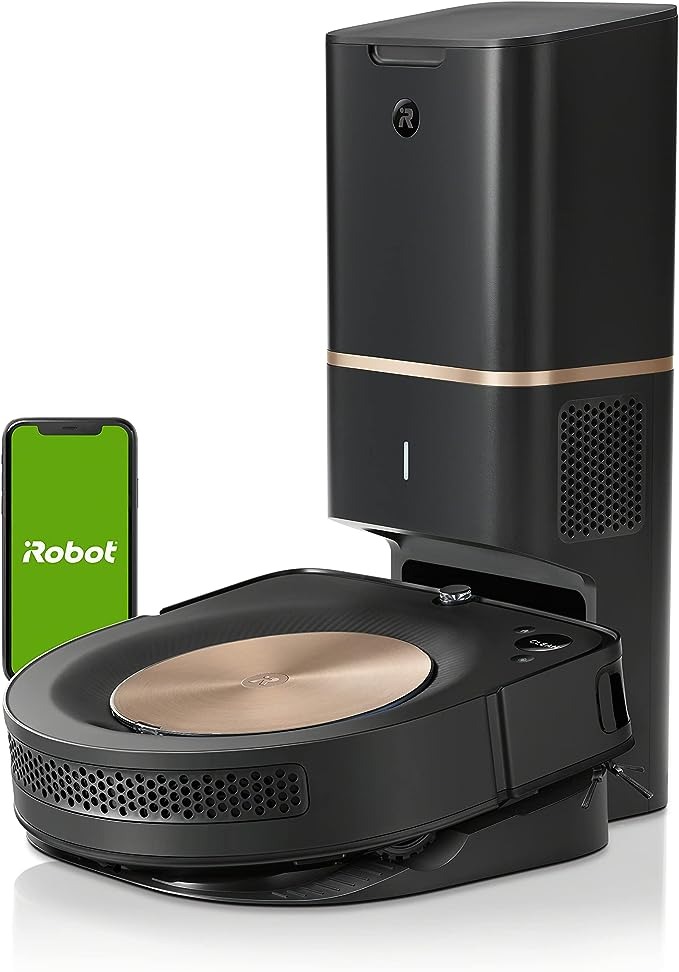AI and Gadgets

Artificial intelligence (AI) is a broad field of study that seeks to create intelligent machines capable of performing tasks that typically require human-level intelligence. The field encompasses various subfields, including machine learning, natural language processing, robotics, and computer vision. At its core, AI aims to develop machines that can learn from data and make decisions based on that data.
In this field, many useful devices have been created, which are collectively referred to as gadgets. These gadgets can perform various tasks and assist in our daily lives.
AI and gadgets:
Artificial intelligence has revolutionized the way we interact with gadgets. From smartphones to smart home devices, AI has made gadgets more intuitive, personalized, and efficient. In this article, we introduce attractive and functional gadgets that can buy you more time in your life, and we strive to update this article regularly and refresh this list. Please stay with us and help us complete our list with your comments.
Robotic Vacuum:
One of the most valuable and humble tools that can buy you more time in your life is a robot vacuum. Some of these popular gadgets are listed below:

iRobot Roomba Combo j7+ :
Intelligent Mapping, Multi-Floor Mapping, Dirt Detection Sensor, Edge Cleaning, Anti-Fall, Scheduling, Pet Hair Pick Up, Auto-Docking, Room-By-Room Navigation, and Self-Emptying are features of this device
Surface Recommendation: Carpet, Hardwood, Hard Surfaces
Controller Type: Amazon Alexa, Siri, Voice Control
Battery Cell Composition: Lithium Ion
Item Weight: 3.4 Kilograms
The Roomba j7+ robot vacuum empties on its own, packs 10 times the power-lifting suction, and comes with unique intelligence to avoid cords and pet waste. It even understands times when you’re home and seasons when more cleaning may be needed
. This device is one of the most advanced robot vacuums from iRobot, offering both vacuuming and mopping in a single device. That’s a beneficial offer that is integrated into the box of this device.
Allow it to transition seamlessly between vacuuming carpets and mopping hard floors. This dual-purpose design saves time and eliminates the need for multiple cleaning devices. The “j7+” model features the Clean Base Automatic Dirt Disposal, which enables the Roomba to empty its dirt bin into an enclosed bag that can hold up to 60 days of debris. Some people who own older models of robot vacuums are frustrated that they have to switch the device between sweeping hard floors and carpets, but this robotic vacuum eliminates these issues.
The Roomba Combo j7+ features iRobot’s advanced PrecisionVision Navigation, one of the AI and gadget features that uses AI to detect and avoid common household obstacles, such as pet waste, cords, and shoes. The robot can recognize these objects and intelligently maneuver around them. Maneuverability is crucial in this category of devices and should be considered by customers.
Using the iRobot Home App, you can set up personalized cleaning schedules, designate specific rooms or areas for targeted cleaning, and even create “Keep-Out Zones” to prevent the Roomba from entering certain areas. The app also supports voice commands through Google Assistant and Amazon Alexa.
The Roomba Combo j7+ is equipped with strong suction capabilities and advanced sensors that help it adapt to various floor types, providing thorough cleaning. It automatically adjusts its suction power when it detects carpets, ensuring deep cleaning. Effective detection, creating accurate maps of rooms, and executing tasks carefully are some of the most efficient features.
With Imprint Smart Mapping, the Roomba Combo j7+ learns your home’s layout and allows you to label rooms in the app. This enables you to direct it to clean specific rooms or areas, offering greater control and efficiency.

iRobot Roomba s9+ :
Ideal for Pet Hair, Powerful Suction, Thoroughly Cleans Corners & Edges, Wi-Fi Connected, Automatic Dirt Disposal- Empties Itself are features of this device
Surface Recommendation: Carpet, Hardwood, Hard Surfaces
Controller Type: Vera, App Control, Amazon Alexa, Siri, Voice Control
Battery Cell Composition: Lithium Ion
Item Weight: 8.2 Pounds
With 40x more Power-Lifting Suction, our legacy powerhouse cleaning system, and advanced technologies, clean thoroughly—even into corners and along edges. The S9+ empties itself into the Clean Base Automatic Dirt Disposal, which holds months of debris. Learning never stops, as it offers personalized cleaning recommendations that work around your life, pollen seasons, and peak pet-shedding times—so that it’s always one step ahead of the mess. (Compared to the Roomba i Series robots)
The iRobot Roomba s9+ is a premium robot vacuum designed for those who prioritize top-tier cleaning performance, convenience, and smart home integration. With its powerful suction, intelligent navigation, and self-emptying base, it delivers a truly hands-free, thorough cleaning experience.
The iRobot Roomba s9+ is iRobot’s most advanced and powerful robot vacuum, designed to deliver exceptional cleaning performance. It’s packed with high-end features that distinguish it from other models, including powerful suction, advanced navigation, and a self-emptying base, making it an ideal choice for those seeking an intelligent, hands-free cleaning solution.
The Roomba s9+ boasts 40x the suction power compared to previous Roomba models (like the 600 series), which helps it pull up dirt and debris even from deep within carpets. Combined with a specially designed D-shaped body and Corner Brush, it’s highly effective at reaching dirt in corners and along walls.
The s9+ is designed with an Anti-Allergen System, which means that it not only traps dirt and dust but also keeps them contained in its dust bag, reducing exposure to allergens.
The Roomba s9+ uses sensors to detect areas with higher concentrations of dirt, such as high-traffic zones, and adjusts its cleaning accordingly. It also features dual multi-surface rubber brushes that flex and adapt to maintain constant contact with various floor types, from hard floors to carpets.
Another benefit of AI and gadgets is that, equipped with Imprint Smart Mapping, the S9+ learns and maps your home layout, allowing you to customize which rooms or areas you want to clean. Its advanced navigation system uses vSLAM technology (Visual Simultaneous Localization and Mapping), enabling it to create detailed maps of your home and navigate efficiently. The Dirt Detect feature utilizes AI algorithms to pinpoint and concentrate on high-traffic and dirtier areas of your home.
You May Also Like :
Stay up to date with the latest in mobile innovation by reading our
Best Smartphones of 2025 Reviewed: Samsung, OnePlus & Xiaomi Compared, where we evaluate cameras, battery life, software features, and price-to-performance across the newest flagship and mid-range models.
If your home needs a smart cleaning upgrade, don’t miss the hands-on comparison in
Top 3 Robot Vacuums in 2025: Which One’s Actually Worth It?, which tests navigation, suction, battery life, and app integrations to find the best practical choice for different floor plans and budgets.
Wearables are shaping how we track health and stay connected—explore the best options in
Top 10 Wearable Tech Devices in 2025: Smart Gadgets That Redefine Daily Life, featuring fitness trackers, smartwatches, earbuds, and health-focused devices that deliver meaningful features without sacrificing battery life.
And if you want a clear foundation, read
What is Technology? for a concise explanation of how tools, systems, and innovation combine to solve problems and transform everyday life.
